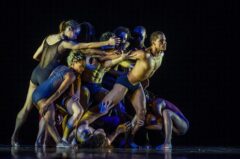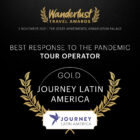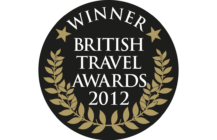Private Journeys
Signature Cuba: The complete Cuba
18 days from £3,010pp
(based on two people sharing & excluding flights)
Itinerary
 Map
Map
Day 1
Transfer to your accommodation in the centre of Havana.
Your accommodation is in the very heart of historic Havana just a quick stroll from the city’s principal squares.

Stay at -
Madero Bed and Breakfast
Day 2
Guided walking tour of Old Havana.
Your introduction to the city is a guided walking tour of Old Havana. The streets of La Habana Vieja were declared a UNESCO World Heritage Site in 1982, and the subsequent restoration of this part of town has transformed it into arguably Latin America’s finest colonial quarter, in marked contrast to the rambling, potholed streets and crumbling façades around it.
Stroll along the cobbles, between grand, pastel-hued mansions and bustling street life. Music seeps out of every doorway and the narrow streets are clogged with gargantuan, crumbling 1950s American cars, which you will have the option of hopping into and cruising down the Malecón. You’ll have trouble keeping your camera by your side as iconic images flash before you round each and every corner.

Stay at -
Madero Bed and Breakfast
Day 3
Transfer to Las Terrazas.
Travel on by land to visit the community project of Las Terrazas in the Sierra del Rosario UNESCO biosphere reserve. This is Cuba’s premier centre for ecotourism, which offers the opportunity to get close to the local community, whose members coexist harmoniously with their surroundings.

Stay at -
Hotel Moka Las Terrazas (La Moka Eco Lodge)
Day 4
Excursion to Viñales and Pinar del Rio.
On a full day guided tour, travel west by road to Pinar del Rio through the Sierra del Rosario. The province of Pinar is a fertile region where the combination of sun and soil is conducive to the successful cultivation of tobacco; as well as cattle rearing. Both these economic activities were launched by settlers from the Canary Islands, who started to arrive in the 16th century. Visit a cigar factory in the town of the same name and learn about the production process.
Continue by road to Viñales, a small, rural town tucked away in the Sierra de los Órganos. The shady high street is lined with trees, wooden colonnades and one-storey, red-roofed houses. Horse and carts clatter along the main road and local children play baseball with sticks and stones outside the dilapidated whitewashed church in the main square. There is a splendid old chemist’s shop and a few other bare-shelved stores, as well as a couple of salsa bars.
Here you’ll explore the town, view a prehistoric mural and take a boat ride along an underground river. The valley has a distinctive landscape, with dramatic limestone mountains, known as mogotes, which jut into the sky from a lush, fertile plain. Using oxen and carts, local farmers cultivate the red soil of the valley floor for fruit, vegetables and tobacco, and the countryside is peppered with thatched curing barns for drying the tobacco leaves.

Stay at -
Hotel Moka Las Terrazas (La Moka Eco Lodge)
Day 5
Morning at leisure at las Terrazas; continue to Cienfuegos.
Sierra del Rosario Biosphere Reserve sits on an impressive mountain range of tropical and semi-deciduous forest within the coffee-producing region. The reserve is rich in flora and fauna and offers some the island’s best bird-watching. Other notable wildlife includes bats, frogs and lizards. You have an optional morning walk or community visit.
In the afternoon drive to Cienfuegos. Drive through the central heartland of Cuba, a transition zone between the prosperous pre-Revolutionary plantations of the west and the cattle pasture of the poorer east. The elegant city of Cienfuegos is an important port town founded by French settlers from Louisiana in 1819. Its French founders left their mark in broad neoclassical boulevards, art deco façades and blond inhabitants but there’s also a strong Afro-Caribbean presence. This is a seafaring city with salt in the air; it’s the world’s primary sugar port. The ambience and architectural style is distinct from that of the rest of the island.

Stay at -
Hotel Melia San Carlos
Day 6
Guided tour of Cienfuegos.
Today you’ll have a walking tour of this easy-going place, identified by the sobriquet the ‘Pearl of the South’, so very different from the other cities in Cuba. Later drive on to the city of Trinidad.
Trinidad was declared a UNESCO World Heritage Site in 1988. Its popularity has not affected its colonial charm and unhurried atmosphere. Trinidad’s elegantly crumbling town houses lead to vibrant plazas frequently filled with music and salsa dancing. Low-rise, brightly painted houses with vast shutters open out onto cobbled streets, palm trees dot the main plaza and evening entertainment continues into the early hours.

Stay at -
Iberostar Grand Hotel – Trinidad
Day 7
Guided tour of Trinidad and the Sugar Mill Valley.
You’ll have a guided tour of the city and venture into the surrounding countryside, the Valle de los Ingenios (Sugar Mill Valley). In the 18th and 19th centuries, this region was one of the wealthiest as a result of its participation in the sugar boom. Visit the Manaca-Iznaga tower, climb to the top and enjoy some of the best views in Cuba. From here, the plantation owner kept a watchful eye on the slaves working in the fields below. The views across the valleys of sugar cane fields are breath-taking in the late afternoon light.

Stay at -
Iberostar Grand Hotel – Trinidad
Day 8
By road to Camagüey via Sancti Spiritus.
Sancti Spíritus sits right slap bang in the centre of Cuba. It was one of the original seven Cuban cities founded by the Spanish in 1514. Its colonial origins are evident in its buildings and layout, although it is not as exquisite and well preserved as the Trinidad to the south, which as a result attracts more visitors. Its neglect by governments through the ages adds to its charm for some.
Highlights include the green-towered Parroquial Mayor, the country’s oldest (founded in the early 16th century). Another top attraction is the Colonial Art Museum, occupying one of Sancti Spíritus’s loveliest colonial homes. The luxurious mansion belonged to one of one of Cuba’s old aristocratic families. Following their flight from Cuba after the Castro Revolution, it became the property of the state in 1961. The town also hosts one of Cuba’s older river bridges. Graced with five arches, this short bridge was constructed in 1815 from clay bricks, designed for pedestrians and carriages during colonial times, and it remains closed to modern traffic.
Continue to Camagüey.
Stay at -
Hotel Camino de Hierro
Day 9
Guided walking tour of Camagüey.
Founded by Spanish conquistadors in the 16th century, the city, with its winding streets, is in marked contrast to the grid system which characterises the majority of Cuban towns. Stately colonial houses facing onto streets; huge windows protected by wrought-iron grilles; lush green gardens tucked behind the walls. It’s a vibrant place bursting with culture – national poet Nicolás Guillén was born here and the Camagüey Ballet is internationally renowned. On Saturday nights there is a lively street party along its main thoroughfare.
On your guided walking tour you will discover the city’s irregular, intricate street network while admiring public and private buildings of great colonial architectural beauty, including Plaza San Juan de Dios.
In the afternoon, continue by road to Bayamo, a gem featuring pastel painted houses and marking the spot where the mountains of the Sierra Maestra begin.
Stay at -
Hotel Royalton – Bayamo
Day 10
Hike to Fidel’s hideout (optional).
If you fancy a bit of a hike you can visit the Comandancia de la Plata. This was Fidel’s mountain hideout, where his revolutionary strategy was organised. You need to be reasonably fit, but it’s a delightful and rewarding walk, infused with historic significance.
If not hiking, explore low-key Bayamo, renowned as containing almost half of the most significant historical sites in the country. A stroll round of this city will help you discover some of the most significant spots, view the cathedral, spectacular colonial architecture, and enjoy the elegant houses and plazas.

Stay at -
Hotel Royalton – Bayamo
Day 11
By road to Santiago de Cuba.
Take to the road again and proceed to Santiago de Cuba, the island’s most Caribbean city and a melting pot of Haitian, African and Spanish influences, reflected in both its architecture and people. Cuba’s second largest metropolis sits in a valley surrounded by mountains huddled around a natural harbour.
Despite being a bustling hive of activity, Santiago retains an intimate and friendly air, more associated with a smaller provincial city. What’s more, the city is jam-packed with culture and tradition, from the deep-rooted African religion of Santería to its conveyor belt of great contemporary musicians.

Stay at -
Hotel Casa Granda
Day 12
Guided tour of Santiago.
Also known as the Heroic City, Santiago played an important role at the beginning of the wars for independence. This full-day guided tour takes you to the major places of interest, including the Moncada Barracks, famed for the unsuccessful pre-revolution attack by a handful of rebels led by Castro. This failed attack nevertheless was the springboard which launched the revolution. Cementerio Santa Ifigenia, Barrita de Ron Caney, the Casa del Habano and the San Pedro de la Roca colonial fortress. You’ll have a seafood lunch at the quay.

Stay at -
Hotel Casa Granda
Day 13
Transfer from Santiago to Baracoa.
Baracoa is set at Cuba’s most easterly point, and was the first Spanish settlement on the island (Columbus landed here in 1492). It remained isolated from the rest of the country, only accessible by sea, until the construction of a mountain road, La Farola, in the 1960s. The town is set in a spectacular curve of mountains and feels as if it has been suspended in time; isolation has protected it from the excesses of tourism, and it’s a delight to wander the streets and take in the surprisingly vibrant and authentic nightlife.

Stay at -
Hotel Rio Miel
Day 14
Optional hike up El Yunque mountain.
The region surrounding Baracoa is one of rich, tropical beauty, and there’s a UNESCO Biosphere Reserve. The banks of the Yumari river, are groaning with cocoa and coconut groves with a soundtrack supplied by a myriad of tropical birds. You can elect to ascend ‘El Yunque’ an anvil-shaped mountain which dominates the skyline. The climb is steep but there are wonderful views from the top over Baracoa Bay.

Stay at -
Hotel Rio Miel
Day 15
By road to Holguin
Head west cross country towards Holguin. Holguin is Cuba’s fourth largest metropolis but for visitors is primarily a transit point for those heading to the island’s increasingly popular north-east coast beaches such as the resort of Guardalavaca, 50km away. Despite its size, Holguín is an easy-going and friendly city. The centre is quite dilapidated but its several parks and squares are dominated by statues to national heroes.
Stay at -
Hotel Caballeriza
Day 16
Transfer to Gibara on the north-east coast.
The off-the-beaten-track community Gibara, a little port situated on a bay on the scalloped north east coast has been spruced up after earthquake damage, is delightful and worth the detour. The fishing port is situated in rugged, hilly landscape dotted with royal palms and interspersed with sugar cane plantations in the valleys.

Stay at -
Hotel Ordono
Day 17
At leisure in Gibara.
The crinkly coastline, with secret coves which once sheltered buccaneers, is gradually being opened up to tourism, but the port Gibara retains its off-beat, remote ambiance. The town is named after the lumpy hill which composes its backdrop. There’s a grand view of the town from the ruined fort El Cuartelon. The main square, dominated by a 19th century cathedral built in eclectic mix of styles, is shaded by African oak trees imported from Angola in the 1970s. The calm little streets and waterside malecón are lined with sedate old houses with porches and stained glass windows, gradually being done up.
You may decide to drive or walk further afield to visit the Cavernas de Panadernos, a chain of underground limestone caves – you are advised to take a local guide if planning to enter them; you can hire one in town. The presence of fluttering bats ads to the eerie atmosphere. Alternatively drive along the craggy coast to one of the gorgeous beaches, many of which now feature hotels and facilities. Guardalavaca is the best established of these.
Stay at -
Hotel Ordono
Day 18
Transfer to Holguin airport for your departure flight.
You might choose to stay on longer at one of the north-east coast’s beach resorts, if not, you will be transferred today to the airport at Holguin to begin your journey home.
Please note: Flight options from Holguin can be minimal and restrictive, meaning you may need to transfer back to Havana (with an overnight en route) for your flight home instead.
Outline itinerary
Day 1
Transfer to your accommodation in the centre of Havana.
Day 2
Guided walking tour of Old Havana.
Day 3
Transfer to Las Terrazas.
Day 4
Excursion to Viñales and Pinar del Rio.
Day 5
Morning at leisure at las Terrazas; continue to Cienfuegos.
Day 6
Guided tour of Cienfuegos.
Day 7
Guided tour of Trinidad and the Sugar Mill Valley.
Day 8
By road to Camagüey via Sancti Spiritus.
Day 9
Guided walking tour of Camagüey.
Day 10
Hike to Fidel’s hideout (optional).
Day 11
By road to Santiago de Cuba.
Day 12
Guided tour of Santiago.
Day 13
Transfer from Santiago to Baracoa.
Day 14
Optional hike up El Yunque mountain.
Day 15
By road to Holguin
Day 16
Transfer to Gibara on the north-east coast.
Day 17
At leisure in Gibara.
Day 18
Transfer to Holguin airport for your departure flight.
Inspired by this trip
Our exciting range of articles on Latin America explore everything from iconic destinations and lesser-known cultural gems to delicious traditional recipes. You’ll also find exclusive travel tips, first-hand client reviews and the chance to get your personal questions answered by our travel experts.
Papagaio
Your edit for Latin American inspiration
Our exciting range of articles on Latin America explore everything from iconic destinations and lesser-known cultural gems to delicious traditional recipes. You’ll also find exclusive travel tips, first-hand client reviews and the chance to get your personal questions answered by our travel experts.
View Extraordinary Inspiration


































